The first American city to have a skyscraper was Chicago, but New York’s Manhattan is definitely better known for the steel-framed craze that absorbed large urban areas of the United States at the beginning of the 20th century. Early skyscrapers were tall commercial buildings built between 1884 and 1939, predominantly in New York City and Chicago, and they benefited from new inventions like iron-framed structures with deep foundations, elevators, and electric lighting. Since in 1892 Chicago banned the construction of skyscrapers taller than 150 feet, it was New York’s turn to enter the development of tall buildings. At the same time, America’s white-collar staff workforce expanded, and the demand for new office space made New York to continue experimenting with tower designs. Here are some of the early New York skyscrapers:
-
Flatiron
Flatiron is one of the best-known old-fashioned skyscrapers, originally known as Fuller Building. It was groundbreaking at the time when it was completed, in 1902, and its structure was steel-framed making it possible to reach a 22-story height. Flatiron is easy to recognize by its triangular shape, and even the name comes from its unique aspect, resembling a cast-iron clothes iron. It remains a symbol of New York, even if it was one of the tallest buildings for a limited period of time. The public loved it from the beginning, while some critics considered it too awkward – some even thought that the triangular shape and height would cause it to fall down, which didn’t happen, obviously. The Flatiron Building was designated a New York City landmark in 1966 and designated a National Historic Landmark in 1989.
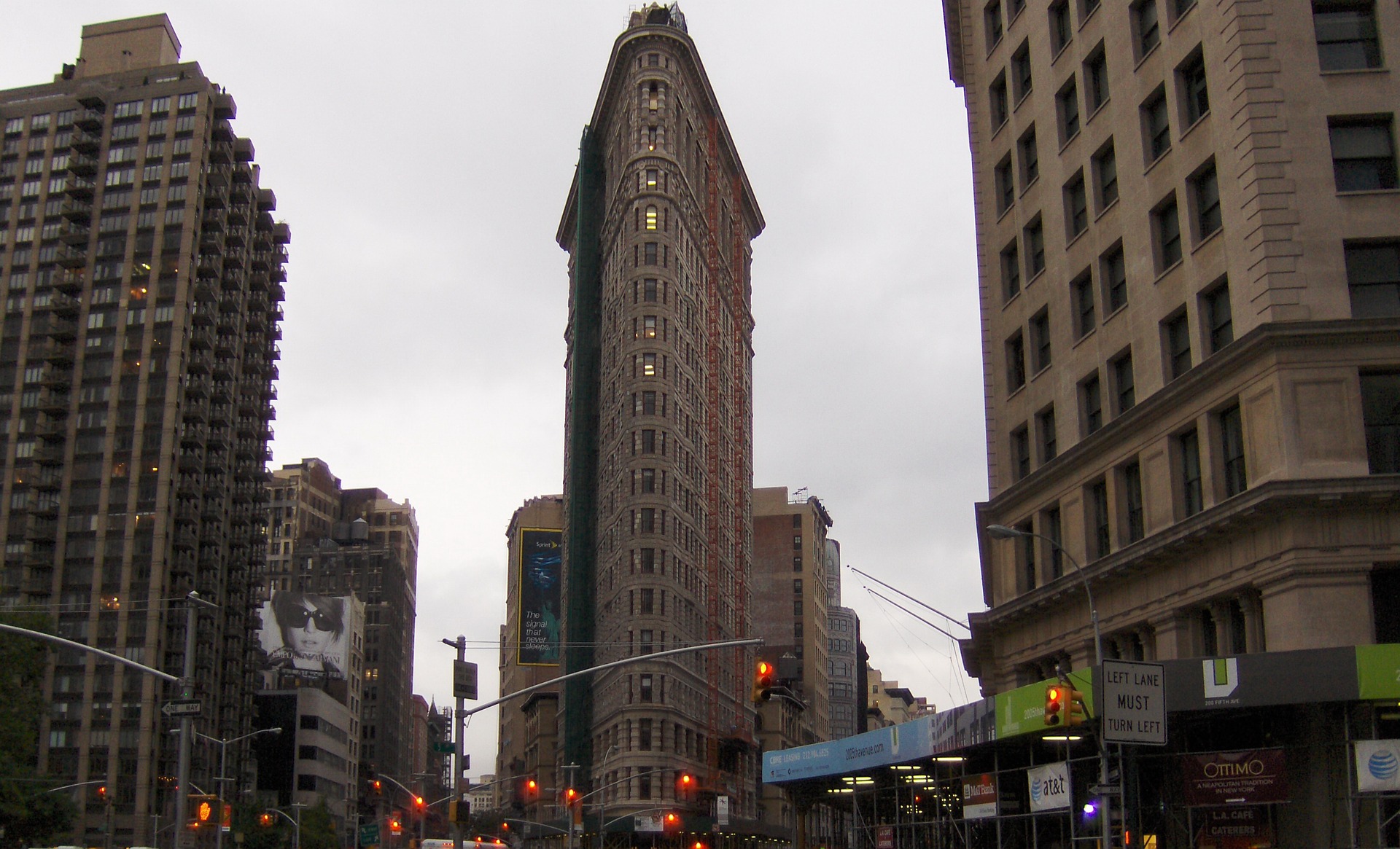
-
Singer Tower
Many of you have probably never heard about the Singer Building or Singer Tower, but this 47-story office tower was the tallest building in the world from 1908 to 1909. It was also the tallest building ever to be purposely demolished by its owner, as it was torn down in 1968 to make room to the site of what now is One Liberty Plaza. The building was commissioned by Frederick Bourne, the head of the Singer Sewing Machine Company, who hired architect Ernest Flagg, and early exponent of the Beaux-Arts architectural style. Singer moved out in 1961, and after a few unsuccessful attempts to make the building profitable again, it was acquired for demolition.

-
Metropolitan Life Insurance Company Tower
Colloquially known as the Met Life Tower, the Metropolitan Life Insurance Company Tower was designed by the architectural firm Napoleon LeBrun&Sons and built by the Hedden Construction Company. The building was originally an 11-story full-block completed in 1893, and it was added the tower later between 1905 and 1909, making it reach a 700 feet height. The Met Life Tower was designated a National Historic Landmark in 1978, and is currently hosting a hotel managed by Marriott. It was the tallest building in the world from 1909 to 1913.
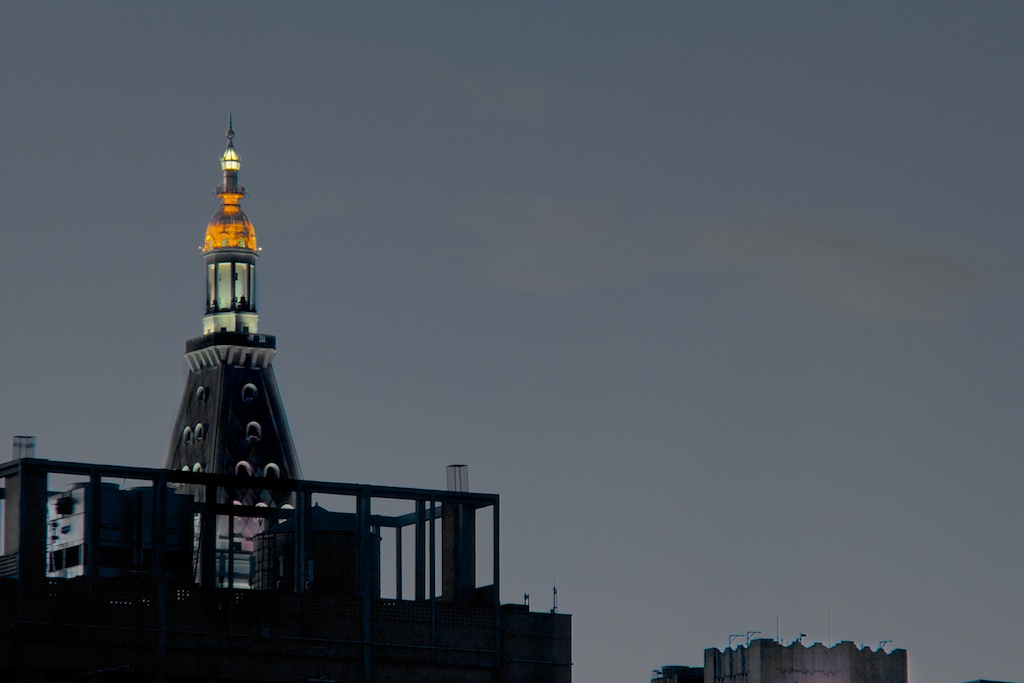
-
Woolworth Building
What makes the Woolworth Building stand out from other early skyscrapers is its neo-Gothic style, chosen by architect Cass Gilbert who was commissioned by Frank Woolworth to design a 20-story office building in 1910. However, the building was eventually elevated to 792 feet, and at its opening it was 60 stories tall. Construction was completed in 1912, and on April 24, 1913, President Woodrow Wilson turned the lights on from a distance by way of a button. Its aspect resembling Gothic cathedrals earned the Woolworth Building the nickname “The Cathedral of Commerce”. It held the record for the tallest building in the world from 1913 to 1930.
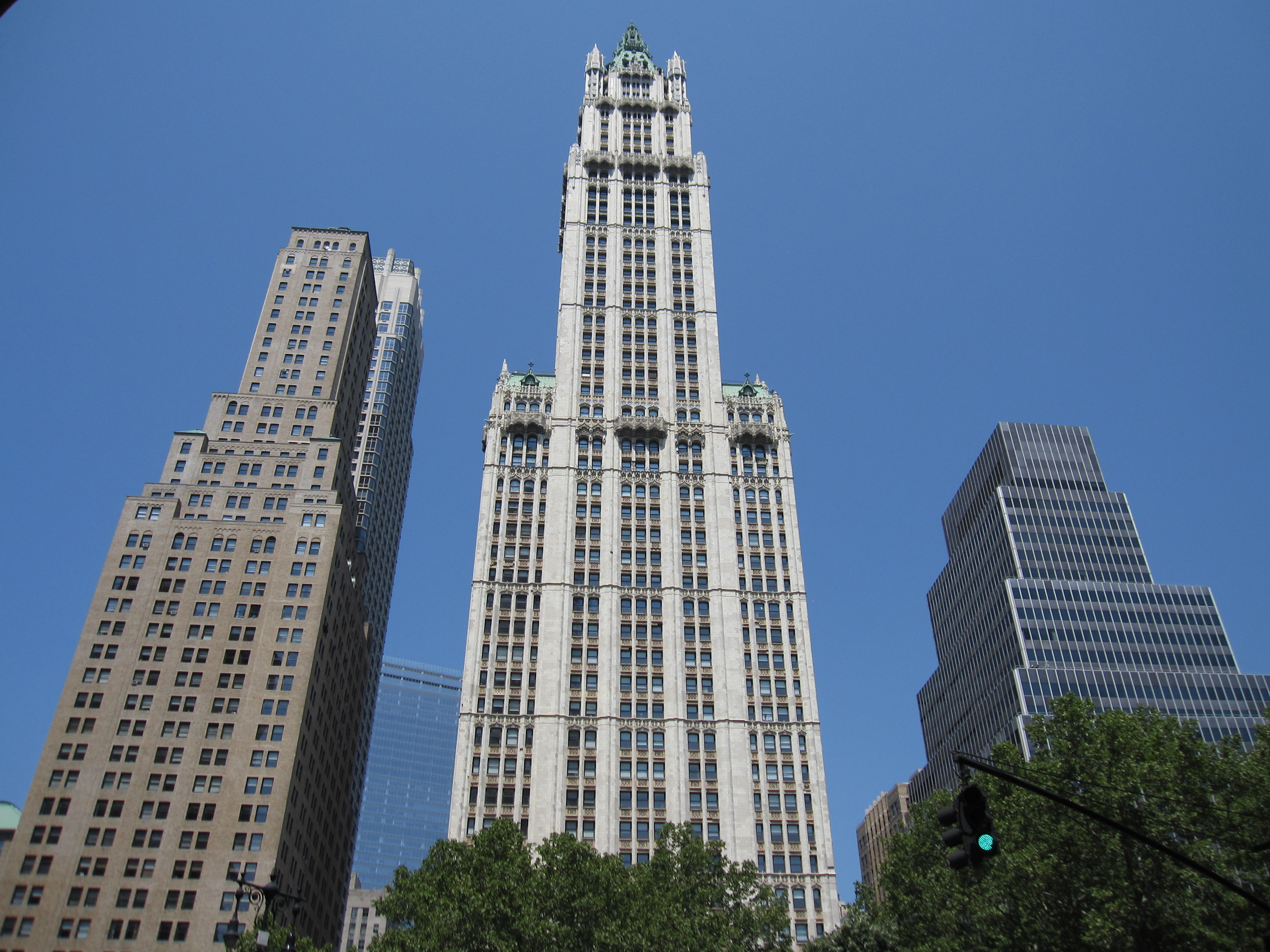
-
The Equitable Building
The Equitable Building is a 40-story office building located in the financial district of Lower Manhattan and completed in 1915. At the time of its completion, it was the largest office building in the world by floor area (1.2 million square feet on a plot of less than one acre). The Equitable Building was one of the tall buildings which determined the municipality to impose zoning restrictions on vertical structures in 1916 because it did not allow sunlight to reach the surrounding ground. The building is in the neoclassical style, rising 538 feet and it has the appearance of two separate identical towers standing side by side. Some of its current tenants are Handel Architects, the New York City Department of City Planning, the New York State Attorney General, and the World Trade Centers Association. Extensive renovation at the cost of $30 million was completed in 1990.

-
Chrysler Building
Chrysler Building is unique in multiple ways – its Art Deco style making it one of the finest buildings in New York, being the world’s tallest building for 11 months until it was surpassed by the Empire State Building in 1931, and being the tallest brick building in the world with a steel structure. It served as the headquarters of the Chrysler Corporation from 1930 to mid-1950s, although the corporation did not own the Chrysler Building; Walter P. Chrysler preferred to support its construction costs so his children could inherit it. Workers on the site had to lay 3,826,000 bricks manually and installed a 38-meter long spire that had been secretly constructed inside the frame of the building, in an attempt to break the record for the tallest building in the world without being noticed by competitors.
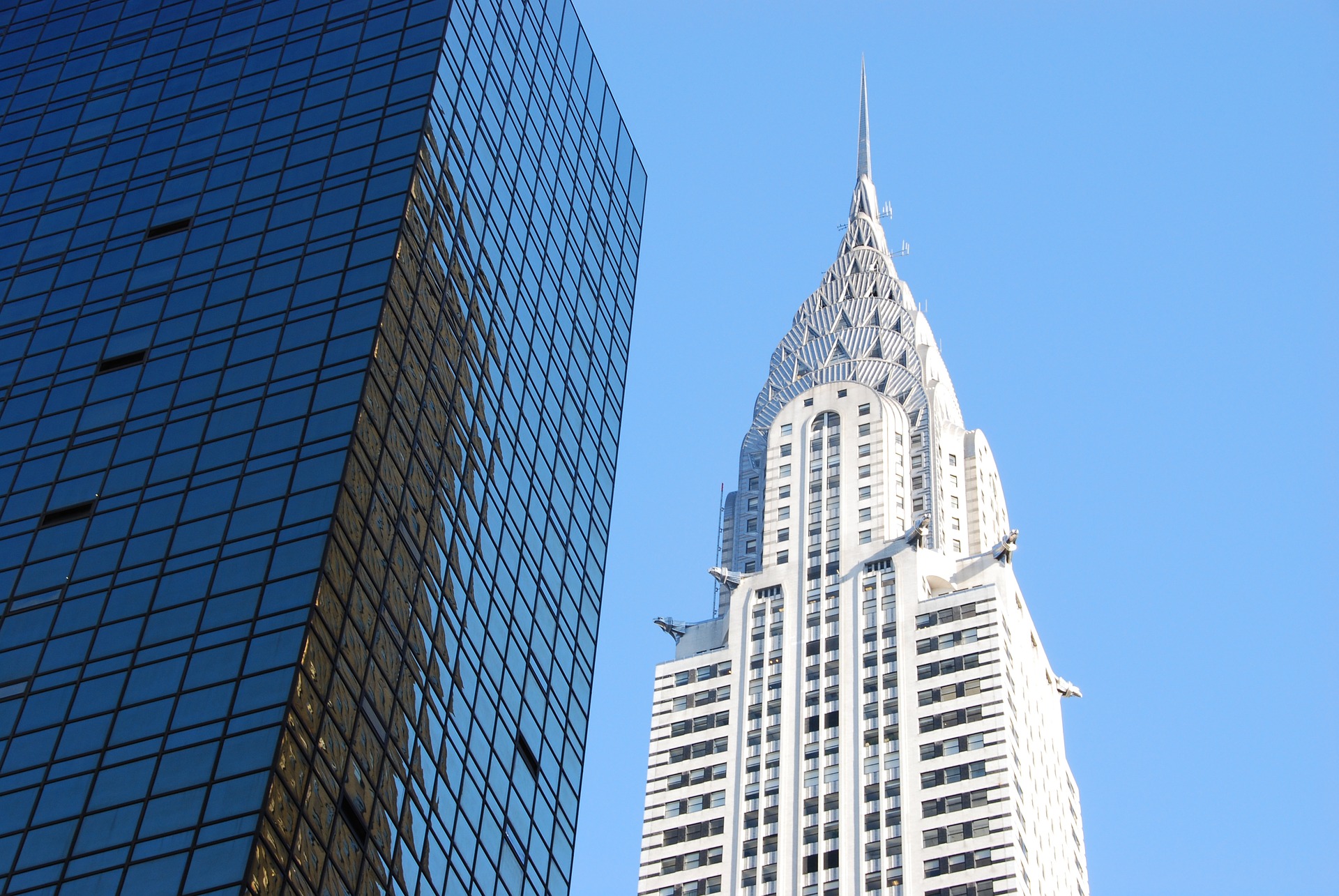
-
Empire State Building
The city’s skyline would not be complete without this iconic building which held the records for the highest in the world for almost four decades, until 1970. Also built in the distinctive Art Deco style, Empire State Building was designated as a National Historic Landmark in 1986 and it was ranked number one on the AIA’s List of America’s Favorite Architecture. The building drawings were produced in just two weeks by William F. Lamb from the architectural firm Shreve, Lamb and Harmon. The first day of this New York landmark were not the happiest ones – it was opened during the Great Depression which resulted in much office space being initially unrented, and it was far from public transportation. It only became profitable in 1950 and it continues to be one of the most visited skyscrapers in the Big Apple.
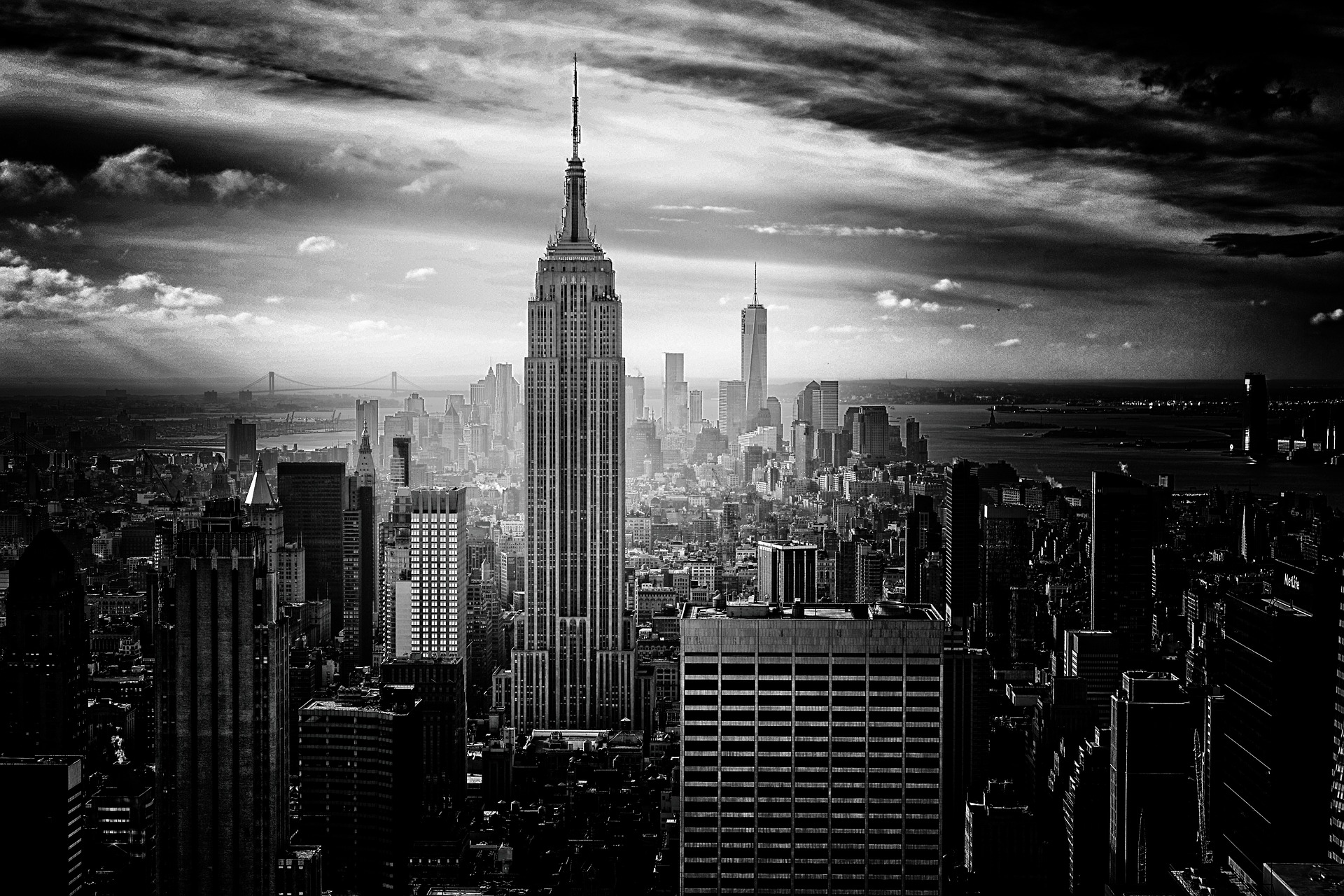
Which of these tall buildings would you like to visit?


